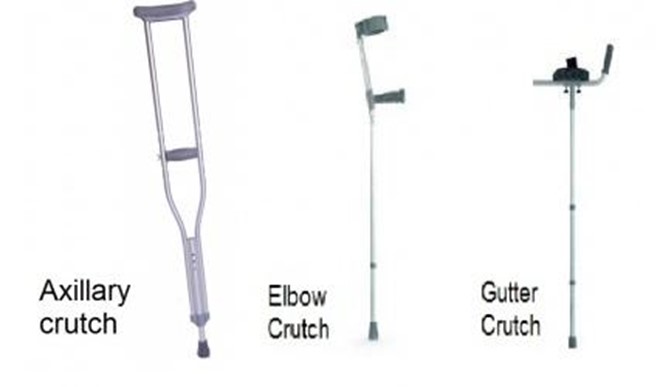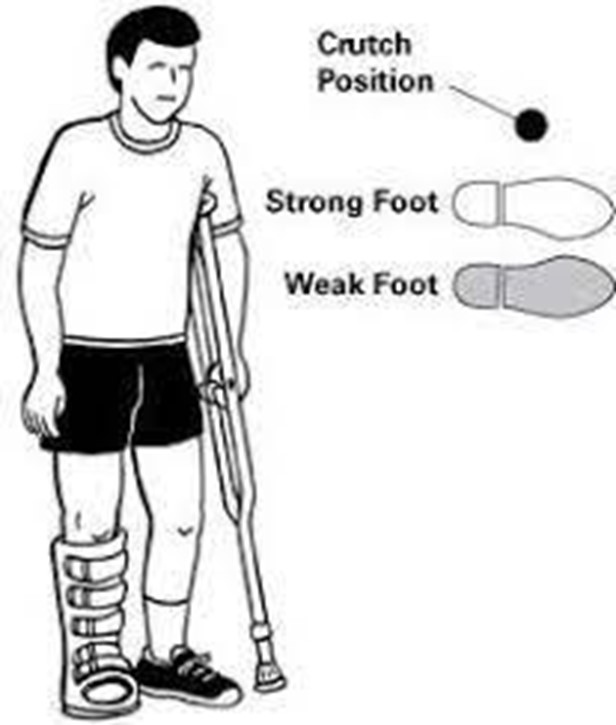Crutches

- Crutches are devices that transfer weight from the legs to the upper body. They are used by patients who have weakness, injury, or surgery on one or both lower extremities. Crutches can be made of wood or metal and have three parts: a handgrip, an axillary bar, and a tip. There are different types of crutches such as axillary crutches, forearm crutches, platform crutches, and strutter crutches.
- The nurse should measure the patient for crutches by following these steps:
- Have the patient stand upright with shoes on and arms at the sides.
- Place two fingers horizontally under the axilla and measure from this point to a point 6 inches lateral to the heel of the foot. This is the length of the crutch.
- Adjust the handgrip so that it is level with the patient’s wrist when the elbow is flexed at 30 degrees.
- Check that there is a 2-inch space between the top of the crutch and the axilla when the patient stands upright with shoulders relaxed.
- The nurse should teach the patient how to use crutches by following these steps:
- Instruct the patient to hold the crutches firmly by the handgrips and place them 6 inches in front and to the side of each foot.
- Teach the patient different gaits depending on their weight-bearing status. The most common gaits are:
- Four-point gait: The patient moves each leg alternately with each opposing crutch. This gait is used for partial weight-bearing on both legs.
- Three-point gait: The patient moves both crutches and then moves both legs simultaneously. This gait is used for non-weight-bearing on one leg.
- Two-point gait: The patient moves one crutch simultaneously with the opposite leg. This gait is used for partial weight-bearing on both legs.
- Swing-through gait: The patient moves both crutches forward together and then swings both legs forward past them. This gait is used for non-weight-bearing on both legs.
- Teach the patient how to sit down and stand up with crutches by following these steps:
- To sit down: Back up to a sturdy chair until it touches the back of your legs. Hold both crutches in one hand by their handgrips. Reach back with your other hand and grasp the armrest or seat of the chair. Lower yourself slowly into the chair while keeping your injured leg extended.
- To stand up: Move to the edge of your seat. Hold both crutches in one hand by their handgrips. Push yourself up with your other hand on the armrest or seat of your chair while keeping your injured leg extended. Balance yourself before putting your weight on your crutches.
- The nurse should monitor for complications such as nerve damage, skin breakdown, falls, or infection from using crutches. The nurse should also inspect the crutches regularly for wear and tear and replace them if needed.

Nursing Test Bank
Naxlex Comprehensive Predictor Exams
Questions on Crutches
Search Here
Related Topics
More on Nursing
Free Nursing Study Materials
Access to all study guides and practice questions for nursing for free.
- Free Nursing Study Trials
- Free Nursing Video tutorials
- Free Nursing Practice Tests
- Free Exam and Study Modes
- Free Nursing Revision Quizlets
